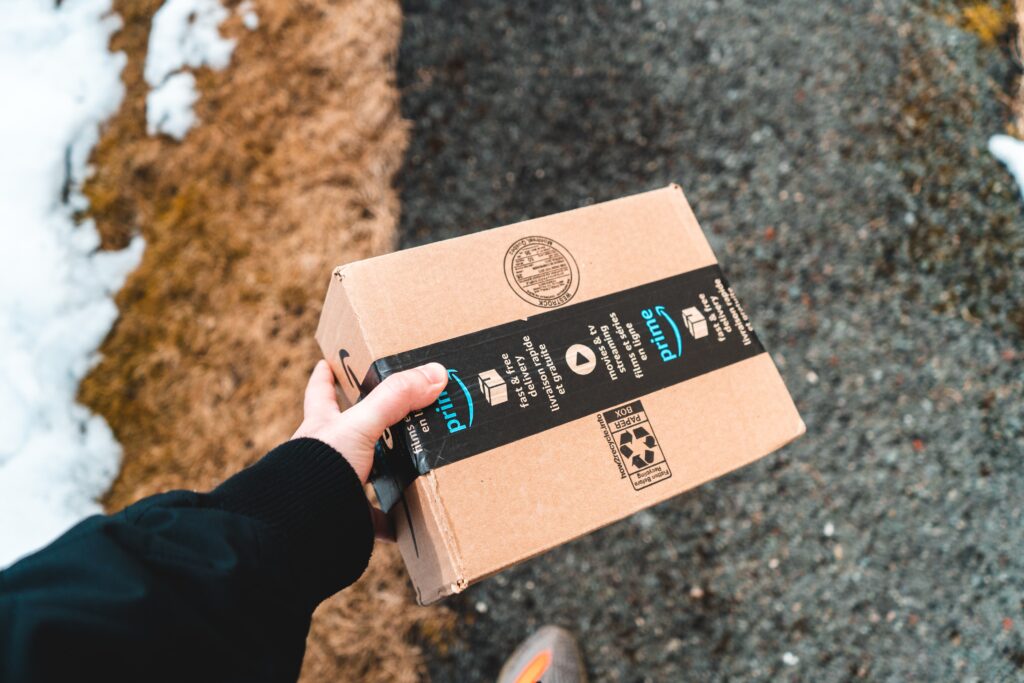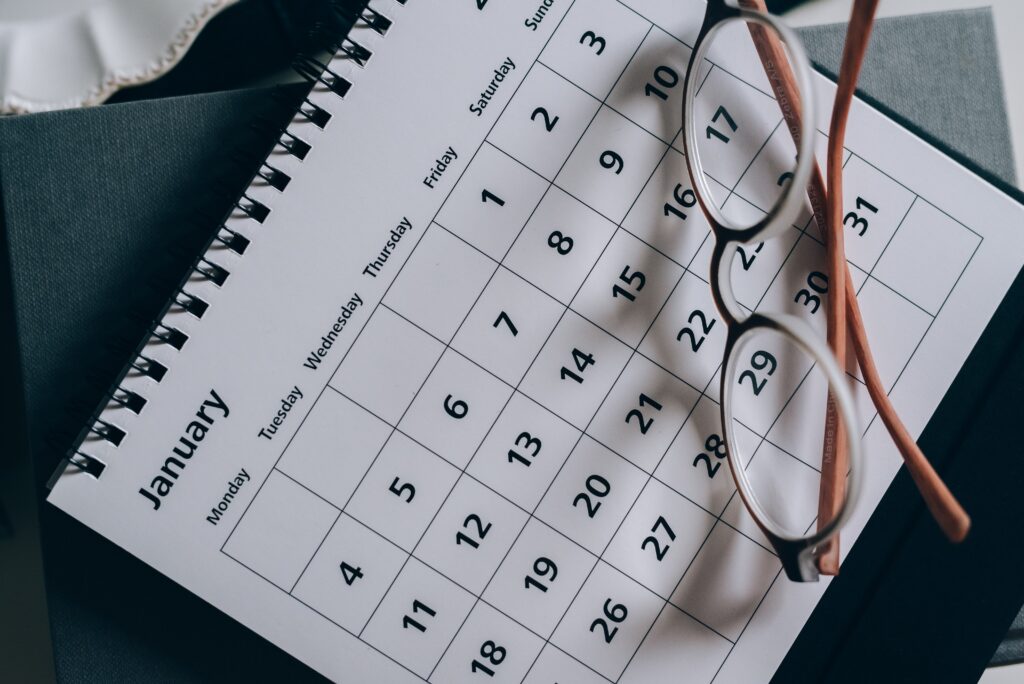Throughout the year, Amazon hosts several major holiday sales that benefit shoppers and sellers alike. Although these events vary in audience, season, and scale, all of Amazon’s shopping events generate a huge number of sales. And it’s not just the ecommerce giant that reaps the benefits of the event, independent Amazon sellers stand to gain an influx in sales. With such immense potential, Amazon’s yearly holiday sales are the perfect time to maximize profits and sales, bringing you that much closer to achieving your business’ goals.
However, simply participating in Amazon’s shopping events and the holiday season doesn’t guarantee success for sellers. In fact, if your business hasn’t properly prepared for the event there’s a possibility that not only could you miss out on sales, but also potentially lose money. This means that it’s crucial for your business to plan ahead for events so that you can capitalize on the influx of traffic from customers and reach your business goals. In this guide we’ll break down Amazon’s three largest holiday sales events, how you can prepare for them, and what they’ll mean for your business’ bottom line.
While Amazon has revolutionized the ecommerce world in many ways, one of its largest successes has been its massive online shopping events. Among these events are Prime-subscriber exclusive events, including Prime Day and Prime Big Deals Days, which offer deals only to Amazon Prime’s more than 200 million customers. Other events, like Black Friday and Cyber Monday, remain available to all Amazon customers, as they operate more like traditional retail holidays.
Starting in 2015 as a way to celebrate Amazon’s 20th birthday, Prime Day has become a staple shopping event for both Amazon sellers and customers. Except for 2020 when the event was delayed due to the COVID-19 pandemic, Prime Day always takes place in mid-July, kicking off the third fiscal quarter and a “Christmas in July” feel.
Prime Day 2023 was the biggest to date, boasting record-breaking sales and the largest day of sales in Amazon’s history. The event was also the most successful in history for Amazon sellers, with independent sales on the platform outpacing Amazon’s own retail business significantly.
Formerly known as “Prime Early Access Sale,” this event spans two days and has taken place in October since 2022. While it’s not as large of an event as Prime Day, Prime Big Deals Days kicks off the traditional holiday shopping season over a month early and is a great way to start boosting sales early on in Q4.
Although Amazon has exclusive events, that doesn’t prevent it from participating in longstanding major retail and ecommerce shopping holidays. On Black Friday and Cyber Monday Amazon typically runs competitive holiday deals, including their trademarked “Lighting Deals” which drop every 30 minutes and rival those of even the biggest retail giants.
Amazon has also extended these events, normally running deals from Black Friday through Cyber Monday, rather than containing them to individual days. Since 2020, more holiday shopping has taken place online than ever before, meaning there’s an even greater opportunity for independent Amazon sellers to capitalize on these traditional holiday season sales and profits.
 Get ahead of your competitors for Amazon’s holiday sales by ensuring that your business is primed for great sales as far in advance as possible. Do not wait till the last minute– you risk running out of inventory, missing out on key advertising placement, and ultimately losing sales.
Get ahead of your competitors for Amazon’s holiday sales by ensuring that your business is primed for great sales as far in advance as possible. Do not wait till the last minute– you risk running out of inventory, missing out on key advertising placement, and ultimately losing sales.
If you’ve been selling on Amazon for a while you know that a healthy buffer is necessary for guaranteeing that you’re ready. Whether you simply need to get inventory to an Amazon fulfillment center, you’re prepping and perfecting a product for launch, or you’re getting cash flow to a healthy place, four weeks is the minimum cushion you should have in place to ensure you’re ready. With large events like these though, the further in advance that you can plan the better. The more time you have to set yourself up for success, the more opportunity you have to maximize profits, sales, and success.
If you’re planning on participating in one of Amazon’s large-scale holiday sales, the hope is that your product will be met with loads of demand. To ensure that you can meet this demand and avoid missing out on the opportunity for sales due to low inventory, restock now.
While it’s important that you’re realistic about your predicted sales, it’s also worth noting that many of Amazon’s holiday sales take place in Q4. If you’re preparing for one of these events, it’s smart to think past the event itself and into the rest of the quarter when you’re ordering products, as you’ll likely have increased sales throughout. Buying in bulk will help you keep products in stock even after an event, meaning that customers who didn’t catch the initial deal can continue holiday shopping. Bulk purchases also mean a decrease in your cost per unit, allowing you to create competitive deals for your holiday shoppers and improve your profit margins.
Are you thinking about adding another product to your catalog? What about temporarily stocking seasonal products that could help drive sales? If you haven’t considered launching a new product yet, you might want to. New products, especially seasonal items, can help boost sales and allow you to maximize your bottom line during periods of increased demand. Start optimizing these listings with proper keywords and search terms ahead of Amazon’s shopping events so you can capitalize on the sales and have a successful launch. This includes perfecting images, descriptions, and relevant details.
By launching a new product right before or during Amazon holiday sales you can take advantage of increased traffic and truly test product-market fit in a shorter window of time. Competitive offers on new products will help to ensure a successful launch and prompt satisfied shoppers to leave five-star reviews. Once the product is established on the marketplace, and after the shopping event, you’ll be able to reasonably increase the price and improve profit margins throughout Q4.
Generate traffic by putting your best foot forward during holiday sales by optimizing your listings for keywords and conversions. This is especially important if you have any seasonal items that you want to promote during the event. For your listings to have the desired effect on holiday shoppers during these events, make sure to include aesthetically pleasing and informational images and list all relevant details that might appeal to customers.
To prepare your listings for major holiday sales consider:

While upgrading your marketing is a smart choice for any seller planning on participating in Amazon’s events, this is especially important if your business sells in highly competitive categories or products. Good marketing, especially from Amazon’s PPC campaigns, will direct shoppers to your products and help you increase conversion rates, so make sure that you’ve set a healthy budget. Also remember that increased customer traffic causes PPC ads to become more competitive, meaning you’ll also need to increase your keyword bids.
If you want to make the most of an event, running campaigns ahead of time will make customers aware of your products and help with brand recognition. Ad campaigns will also remind customers that deals are temporary and they need to act now, helping to send your sales through the roof.
Make the most of these campaigns by:
Think how much you love a good deal and how it can encourage you to make a purchase– even if you weren’t planning on it. Your customers feel the same way. Running deals or offering coupons can be a great way to boost your sales on Amazon, especially during big events, as it will help set you apart from competitors.
Deals
Create a new deal in Seller Central by going to the Advertising tab and select “Deals,” then “Create a new deal.” From there Amazon will list deals that your products are eligible for along with the deal price, discount per unit, and deal fee. While running a deal does cost a fee, it can be a worthwhile investment during big events to drive sales. These deals last for a finite period and are listed as compared to the original price in search results, along with a “Limited Time” banner.
Coupons
You can create a “clippable” coupon that customers see on your listing and search results page. This helps customers understand immediately that they will receive a discount on your product as compared to others. You can choose to offer a percentage or price discount with product coupons.

Most Amazon sellers have experienced firsthand the challenges that come with Amazon fulfillment centers becoming overwhelmed and fees increasing, especially at the end of the year. To avoid struggles with this, it’s critical to decide whether or not Amazon FBA is the best method for shipping and fulfillment for your business during these holiday sales, or if Fulfillment by Merchant would be a more viable strategy.
Fulfillment by Amazon (FBA)
For large shopping events, Amazon encourages sellers to have any FBA inventory arriving at fulfillment centers at least a month in advance (sometimes even further in advance depending on the quantity and size of the product). However, the earlier you can get your inventory to fulfillment centers, the more likely it’s going to make it to customers without delay.
If you choose to use FBA during a sales event make sure you review your capacity limits in the Capacity Monitor, that way you understand exactly how much inventory you can store with Amazon. If you need greater capacity for products during this time, you’ll have to request and pay for a limit increase.
Fulfillment By Merchant (FBM)
If you’re hoping to increase your window for ordering inventory for an event, consider offering items as fulfillment by merchant. This method allows you to bypass the Amazon check-in process and increase your cash flow leading up to an event by keeping money liquid for longer.
Remember that many Amazon shoppers are looking for items that sell out quickly during these events because there’s simply not enough supply to meet demand. FBM works well if you have the space and ability to ship from a warehouse or home office, and allows you to compete with competitors who may run out of stock. Additionally, if you’re participating in an event, like Black Friday, that’s not Prime Exclusive, Amazon shoppers who don’t have Prime memberships can be enticed by your products even if they have shipping fees. Those free shipping items are no-brainers for Prime members, but everyone else can save money by ordering directly from you.
You already know that your cash flow is the lifeblood of your ecommerce business, but it’s never more important than during Amazon’s big events. Without healthy, positive cash flow your business likely won’t even be in a financially sustainable enough place to participate– meaning that you’re going to lose out on a massive opportunity for profit.
Frontloading inventory for a busy season creates a major strain on your cash flow– it’ll be weeks before you see the cash from your sales after an event, so you need to make sure you have enough working capital on hand to sustain operations in the meantime. Consider where that money will come from, if it will be enough to pay your bills, and how to stay in a healthy position during that time. Forecasting and tracking your cash flow is a smart move for Amazon sellers, even in slow times, so now is the time to start. Whether you’re approaching an Amazon event or simply thinking about it in the future, get a handle on your cash flow to avoid stretching too far in the race for inventory.

It’s easy to get caught up in planning for your Amazon business to succeed in the next great event, but what comes after? Don’t let one shopping event wipe out your entire inventory and
force your sales to come grinding to a halt. Especially in Q4, there are several major shopping events on top of increased sales across the board due to the holiday season– there’s too much opportunity to risk burning out early.
As mentioned above, healthy cash flow is critical for maximizing sales and profit during these high-demand periods. Do your best to avoid falling into a cash crunch leading up to these events so that you can keep your inventory at a healthy level and hold onto any ad campaigns that you might be running by accessing working capital.
Ecommerce funding solutions typically have lower rates than traditional banking loans, making them a great option to supplement your cash flow during these periods. And, these solutions are typically fast, meaning that you can take advantage of opportunities as they arise. You can get an offer from Viably within 24 hours after submitting your application. Even though you might not need external funding to make events a success for your business, funding will help to alleviate pressure and create a cash flow buffer that will help set you up to sleep well in even the busiest seasons.
215 E. Chatham St
Suite 215
Cary, NC 27511
Viably is a financial technology company, not a bank. Banking services provided by Piermont Bank, Member FDIC. The Viably Mastercard® is issued by Piermont Bank pursuant to a license by Mastercard International Incorporated, and may be used anywhere Mastercard debit cards are accepted. Application is subject to approval. Terms and conditions apply and are subject to change. No application or monthly fee. Some fees and limits may apply.
Viably Cash Advance and Viably Growth Capital are offered solely through Viably and are not part of the Banking Services provided by Piermont Bank, Member FDIC.
©2024 VIABLY. All rights reserved. Viably® and Viably Banking® are registered trademarks of Viably Capital, Inc.